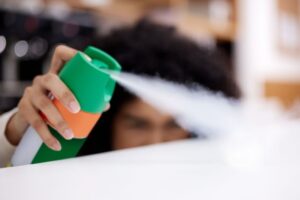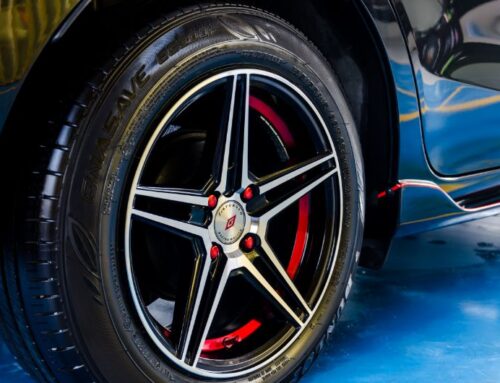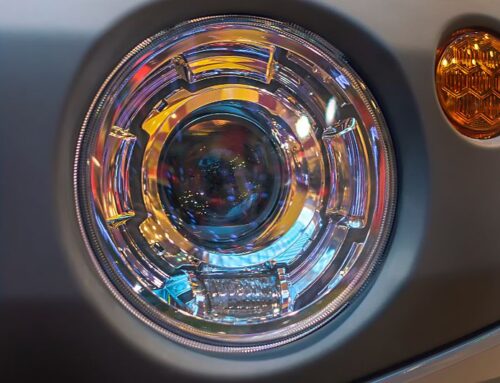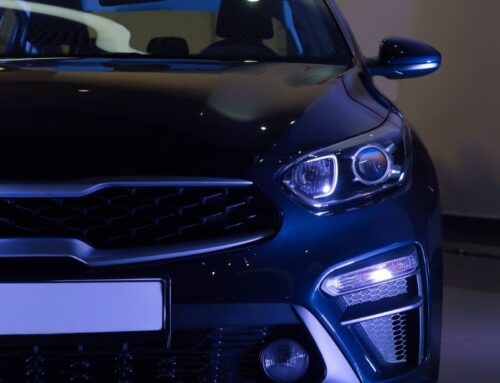One of the biggest questions about headlights is “Does bug spray ruin them?” Bug spray disintegrates the protective layer that is usually on headlights. In addition, it can damage the paint, rubber surrounding the light, and plastic on the headlight lens. This can make them unusable.
Dissolves protective layer on headlights
To remove a layer of oxidation on your headlights, you can use a product known as a headlight polish. This product consists of a mixture of acrylic and ceramic resin, two non-abrasive resins that create a strong bond on the surface of the headlights. The polish is easy to apply and removes easily with a 15% isopropyl alcohol solution.
When the protective layer of your headlights oxidizes, it affects the lens clarity. The lens’ surface can be severely damaged, resulting in loss of clarity. Moreover, the surface of the lens can also melt, which can cause serious damage. Both acrylic and polycarbonate materials are subject to oxidation and degradation. Different manufacturers apply different grades of protective coatings to prevent these problems.
If you have headlights that are prone to oxidation and UV damage, you can consider installing protective film to prevent heat damage and reduced light output. However, the benefits of protective film depend on the quality of the film. It is advisable to buy the best film that allows light and heat to pass through without reducing visibility.
Can damage paint
 Bug spray can damage paint and cause permanent staining. It is very difficult to remove. There are a few things you can do to help remove bug spray. The first step is to wash the area with a mild soap. This will help remove any chemical reagents in the bug spray. Repeat the process several times to ensure complete removal.
Bug spray can damage paint and cause permanent staining. It is very difficult to remove. There are a few things you can do to help remove bug spray. The first step is to wash the area with a mild soap. This will help remove any chemical reagents in the bug spray. Repeat the process several times to ensure complete removal.
Next, you can wash the paint by using a sponge or a cloth. However, you should avoid using scratchy kitchen sponges or towels because they can leave marks on the surface. Moreover, using a rough towel will also scratch the protective layers of the car’s finish. This can lead to the need for professional polishing to remove the damage.
Bug spray can cause paint damage because it contains strong chemical elements. These elements react with other compounds and can damage car paint. Some of the most common insecticides, such as Raid, contain cypermethrin, imiprothrin, and pyrethrin, which are strong chemical elements that can eat away at your car’s paint.
Can damage rubber around light
Bug spray can be a good way to clean your headlights but you have to be careful because it can damage the rubber around your headlights. Bug spray has chemicals that repel insects, but you don’t want to spray them on your paint or on the rubber around your headlights. In addition, it will strip the protective coating off your headlights, so be sure to wash off the excess after use.
If the bug spray is still on your headlights, you can try removing it using a paper towel. You might need to use hard strokes if it is very old and has built up. If you’re lucky, it won’t damage the lens at all, but it can make the headlights look less bright.
In addition to damaging the rubber around your headlights, bug spray can also ruin the paint on your car. The chemical DEET has a solvent effect, which means that it will melt several types of plastic, paint, and synthetic materials. The chemical also damages the protective coating on your headlights, removing scratches and dirt. However, the effects are temporary.
Can damage plastic of headlight lens
Bug spray, especially DEET, can damage the plastic of your headlight lens. It can erode the UV coating on the lens and mix it with deteriorated plastic. The result is a cloudy lens, but the effect is temporary. Bug spray only protects the lens for a short time, so you should apply the repellent on a regular basis. Otherwise, your headlights will continue to look cloudy.
Headlights are made of polycarbonate plastic, which is inexpensive and very durable. However, polycarbonate plastic degrades over time when exposed to UV rays, moisture, and heat. This causes them to lose their clarity and become yellowed. This can result in serious problems with your headlights.
Bug spray is highly corrosive and can damage plastic. It is best to use a cleaning product designed for headlight lenses. Bug sprays can also cause oxidation and can ruin the plastic of your headlight lens. To remove the oxidized layer, you can use abrasive paper. However, you should be cautious not to use sandpaper with too high a grit.





